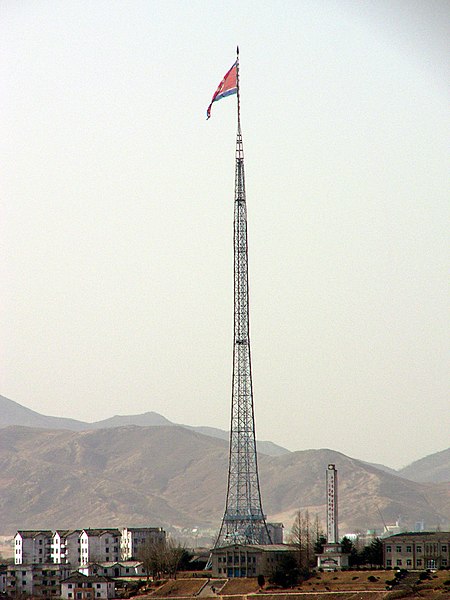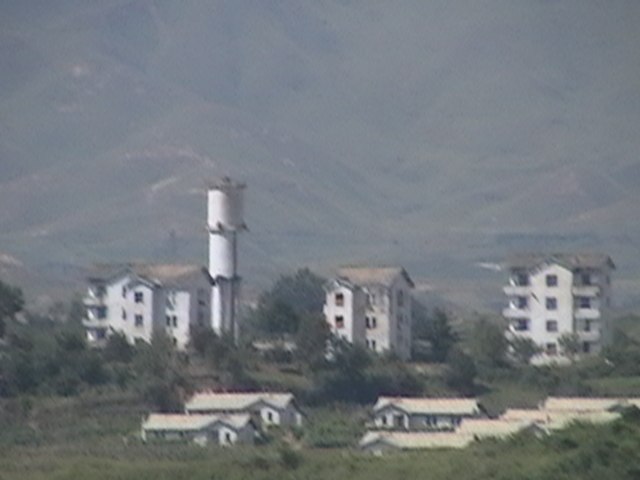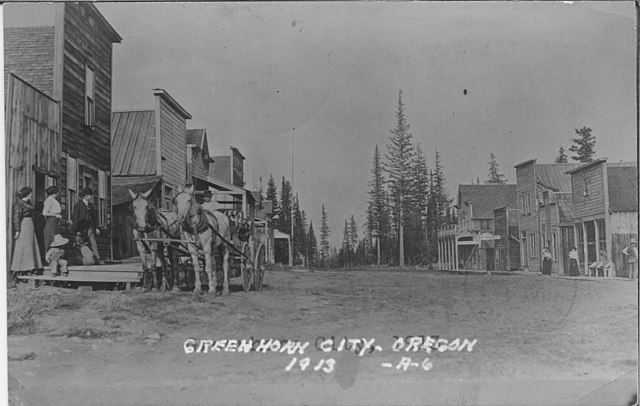Kijŏng-dong, Kijŏngdong, or Kijŏng tong is reportedly a Potemkin village in P'yŏnghwa-ri, Panmun-guyok, Kaesong Special City, North Korea. It is situated in the North's half of the Korean Demilitarized Zone (DMZ). Also known in North Korea as Peace Village, it has been widely referred to as 'Propaganda Village' by those outside North Korea, especially in South Korean and Western media.
The Panmunjom flagpole, flying the flag of North Korea.
The Panmunjom flagpole, the world's sixth-tallest, 160 m (525 ft) in height, flying a 270 kg (595 lb) flag of North Korea over Kijŏng-dong, near Panmunjom.
View of Kijŏng-dong
In politics and economics, a Potemkin village is a construction whose purpose is to provide an external façade to a situation, to make people believe that the situation is better than it is. The term comes from stories of a fake portable village built by Grigory Potemkin, a field marshal and former lover of Empress Catherine II, solely to impress the Empress during her journey to Crimea in 1787. Modern historians agree that accounts of this portable village are exaggerated. The original story was that Potemkin erected phony portable settlements along the banks of the Dnieper River in order to impress the Russian Empress and foreign guests. The structures would be disassembled after she passed, and re-assembled farther along her route to be seen again.
Grigory Potemkin, namesake of the concept
The North Korean Peace Village, located inside the Demilitarized Zone, appears empty despite its advertised population of two hundred families.
False front commercial buildings in Greenhorn, Oregon, 1913
Motorists and pedestrians in Bothell, Washington, can see a forest-like view at this construction site.






